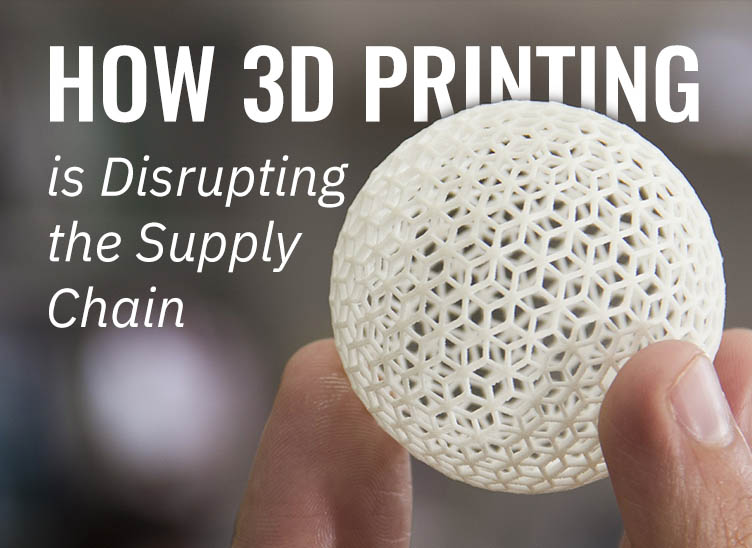
How 3D Printing is Disrupting the Supply Chain
Supply chains must be efficient to be successful, which is why innovative ideas are always hitting them. Processes are refined, added to, taken away from, and improved over time. Each improvement takes effort, creative ideas, money, and time. As digital technology improves, and automation becomes more common, changes have happened more frequently. The biggest advancement is coming in the form of 3D printing technology.
The 3D Printing Revolution
With 3D printing making an impact on almost every industry, it’s no surprise that it is making a mark in the supply chain. Two big names, GE and UPS, are investing in 3D printing equipment to expand their businesses and cut down on the supply chain logistics.
GE has been in the manufacturing business for a long time, but they are looking to the future and how they can become a bigger name with 3D printing. The company has invested billions of dollars into 3D printing technology and recently made headlines for creating the largest additive machine in the world. This 3D printing device is going to be used to manufacture 40,000 jet fuel nozzles by 2020. They also hope to replace more than 850 parts included in a regular aircraft engine with only 12 components created by the 3D printer.
UPS is creating a national network of facilities that will house 3D printing equipment, hoping to capitalize on the ability to create products on demand. Customers follow the simple process of contacting the company when they need parts and UPS produces them with this equipment. This significantly cuts down production time and since they also deliver the products right to the customer’s door, it reduces the number of companies involved. UPS is hoping to really increase their worth by becoming a leader in manufacturing on top of shipping the products.
The Impact on the Supply Chain
With companies getting into more than one component of a product, it disrupts the supply chain. This cuts out any additional companies that contributed to parts before, reducing time and costs. Where several businesses were involved in designing and creating products before (through materials, manufacturing, and shipping), there are fewer hands involved.
This is still a developing idea, with facilities being outfitted. As 3D printing becoming more readily available and applications are still being discovered, this is just the beginning of how it can change the manufacturing industry and supply chain. Other businesses are already looking into how they can adapt their companies to similar strategies. With more qualified staff members becoming familiar with 3D printing processes, there is more availability for training and hiring too.
Companies are not the only ones benefiting from these innovations. The savings are ultimately passed down to the consumer. As more companies adapt, the competition in the market helps to keep those prices low. When everything is done under one roof, by one company, it makes everything more efficient overall.
As businesses learn how to do all the steps of manufacturing themselves, others follow the same pattern. It’s certain that the supply chain will start looking and functioning in a very different way within the next ten years.
